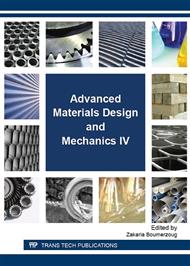p.108
p.117
p.122
p.127
p.132
p.137
p.142
p.148
p.155
Evaluations of Stochastic Fatigue Crack Growth Models through Experimental Data
Abstract:
The study is focused on the comparisons between a polynomial and power-law stochastic fatigue crack growth models through evaluations of experimental data. Both models were assumed that the fatigue crack growth rate equals to a deterministic function in terms of fatigue crack size multiplied by a stationary log-normal random factor. Compact-tension specimens cut from a 2024-T351 aluminum-alloy plate were used for fatigue crack growth experiments under random loads performed on twenty-five specimens. The log-normal probability papers for both models were investigated to show the validity of the log-normal assumption of the random factor . The investigations on the probability of crack exceedance and distribution of random time of the two models were also made, and the comparisons of the results for both models were made as well.
Info:
Periodical:
Pages:
132-136
Citation:
Online since:
November 2016
Authors:
Price:
Сopyright:
© 2017 Trans Tech Publications Ltd. All Rights Reserved
Share:
Citation:


